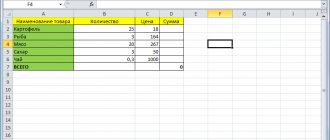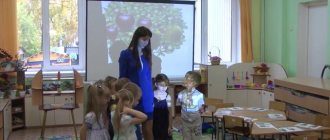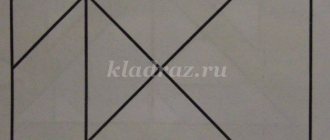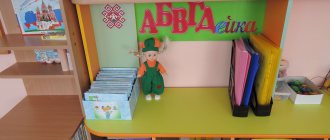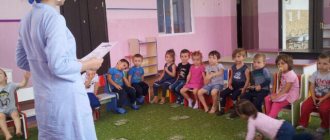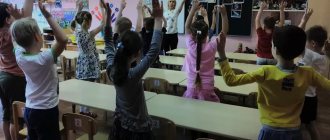Methodological recommendations on history for secondary vocational education
An epigraph is a saying (or a short quotation) before an essay that characterizes the main idea of the work. An epigraph is possible, but not required in an essay.
Appendix 3
How to write a report
The report is a fairly unstudied, but quite common work in educational institutions. There are oral and written reports (close in content to an abstract).
A report is a type of independent scientific research work, where the author reveals the essence of the problem under study; brings different points of view, as well as his own views on it.
Stages of work on the report.
Selection and study of the main sources on the topic (as when writing an abstract, it is recommended to use at least 8 - 10 sources).
Compiling a bibliography.
Processing and systematization of material. Preparation of conclusions and generalizations.
Development of a report plan.
Writing.
Public presentation with research results.
Appendix 4.
How to write a review and annotation
A review and annotation are characterized by small volume and brevity.
Any annotated or reviewed work must be considered in the context of modern life and the modern literary process: it must be assessed as a new phenomenon. Such topicality is an indispensable sign of a review.
By review essays we mean the following creative works:
a small literary critical or journalistic article (often polemical in nature), in which the work in question is the basis for discussing current social or literary problems; an essay that is more a lyrical reflection of the reviewer’s author, inspired by reading the work, than its interpretation; a detailed annotation that reveals the content of the work, the features of the composition and at the same time contains its assessment.
Appendix 5
How to Prepare an Educational Presentation
The basic unit of an electronic presentation in Power Point is the slide.
or frame Basic rules for preparing an educational presentation:
When creating a multimedia aid, you should not get carried away and abuse the external side of the presentation, as this can reduce the effectiveness of the presentation as a whole.
One of the important points is maintaining a single style, unified structure and form of presentation of educational material throughout the lesson. When creating, it is intended to limit oneself to the use of two or three fonts. The entire presentation should be made in the same color palette, for example, based on one template; it is also important to check the presentation for ease of reading on the screen.
Presentation texts should not be large. It is more profitable to use a concise, informational style of presenting the material. You will need to be able to fit maximum information into a minimum of words, attract and hold the attention of students.
Methodological recommendations for conducting practical classes on the history of secondary vocational education
State budgetary professional educational institution of the Samara region “Obsharovsky State College named after. V.I. Surkov"
Guidelines
to carry out practical exercises
in the discipline History
for students in the specialty 02/43/08.
Home and utility services
Nomination: Educational and methodological materials in the disciplines of general education, general humanitarian and socio-economic, mathematical and natural science cycles.
Developer: Merenkova O.Yu. history teacher
Obsharovka 2020
Explanatory note.
Methodological recommendations are intended for performing practical work in the specialty 43.02.08. “Household and utility services” are developed in accordance with the content of the work program of the History discipline, studied in the 1st year.
The recommendations are intended to assist students in performing practical work.
A practical lesson is one of the forms of educational work that is focused on consolidating the studied theoretical material, its deeper assimilation and developing the ability to apply theoretical knowledge for practical purposes. In preparation for a practical lesson, the student must refresh his memory of the theoretical information received in the lessons. Only this will ensure high efficiency of practical training sessions.
The teacher has the opportunity to observe the work of each student, providing him with the necessary methodological and consulting assistance during the practical lesson.
Practical classes are an important form of facilitating the mastery of the course of national history. The main objectives of these classes are to teach students to think independently, get rid of existing cliches and contribute to the expansion of a common historical culture. During the classes, students must learn to apply the developed methodology in the practice of concrete historical research.
During practical classes, students perform various tasks and work. Practical work can be reproductive, partly exploratory in nature.
Work that is reproductive in nature is distinguished by the fact that when carrying it out, students are provided with detailed instructions, which indicate: the purpose of the work, explanations of the procedure for performing the work, tables, educational and special literature.
Works that are partially exploratory in nature are distinguished by the fact that when carrying them out, students do not use detailed instructions, they are not given the order of performing the necessary actions, and students are required to choose methods of performing the work, instructional and reference literature. Works that are exploratory in nature are distinguished by the fact that students must solve a problem that is new to them, relying on their existing theoretical knowledge.
The content of practical classes is solving various kinds of problems, working with literature, reference books, drawing up tables, diagrams, etc.
The topics, content and number of hours allocated to practical classes are recorded in the work program of the history discipline. The composition of practical tasks is planned in such a way that students can complete them efficiently within the allotted time.
Practical classes contain:
- Instructions for performing practical work, including:
- Objective;
- explanations (theory, main factors, etc.);
- order of tasks;
- tables, conclusions (without wording);
- educational, normative and special literature.
- Text tasks for input control (including automated), which determines the theoretical readiness of students to perform practical work, assignments, and solve problems.
When conducting practical classes, various forms of organizing students’ work should be used: frontal, group, individual. Each of them allows you to solve certain didactic tasks: Diversify the work of students, increase the responsibility of each student for independently completing the full amount of work, improve the quality of training of students.
The main stages of the practical lesson are:
- testing students’ knowledge—their theoretical preparedness for the lesson;
- instruction given by the teacher;
- performing tasks, work, exercises, solving problems;
- subsequent analysis and assessment of the work performed and the degree of mastery of the planned skills by students.
Criteria and indicators used to evaluate the assignment: create a table.
Criteria
Indicators
1. Degree of completion of the table and correctness of answers to the questions posed
Max. - 10 points
— completeness of disclosure of issues; — validity of methods and methods of working with the material; - ability to work with literature
- ability to generalize, compare different points of view on the issue under consideration, argue the main points
provisions and conclusions.
2. Originality and integrity of the task Max. - 10 points
- range, completeness of use of literary sources on
questions;
3. Compliance with table design requirements Max. - 5 points
— correct design; — literacy and culture of presentation; - knowledge of terminology and conceptual apparatus of the problem
4. Literacy
Max. - 5 points
— absence of spelling and syntax errors; — absence of typos, abbreviations of words, except generally accepted ones; - literary style.
Converting points received into a grade
• 27 – 30 points – “excellent”;
• 26 – 22 points – “good”;
• 21 – 17 points – “satisfactory”;
• less than 17 points - “unsatisfactory”
Criteria and indicators used in assessing the assignment: draw up a diagram
Criteria
Indicators
1. Degree of completeness and correctness of the diagram creation answers
Max. - 10 points
— completeness of disclosure of issues; — validity of methods and methods of working with the material; - ability to work with literature
- ability to generalize, compare different points of view on the issue under consideration, argue the main points
provisions and conclusions.
2. Completeness and integrity of the task
Max. - 10 points
- range, completeness of use of literary sources on issues;
3. Compliance with the requirements for drawing up a logical diagram Max. - 5 points
— correct design; — literacy and culture of presentation; - knowledge of terminology and conceptual apparatus of the problem
4. Literacy
Max. - 5 points
— absence of spelling and syntax errors; — absence of typos, abbreviations of words, except generally accepted ones; - literary style.
Converting points received into a grade
• 27 – 30 points – “excellent”;
• 26 – 22 points – “good”;
• 21 – 17 points – “satisfactory”;
• less than 17 points - “unsatisfactory”
Topics of practical classes (46 hours)
1Practical lesson. Make a table “Periods of human history”
2. Practical lesson. Compile a table “Appropriating and producing economy”
3. Practical lesson. Make a table “The most ancient civilizations” 4. Practical lesson. Make a table “Bronze Age Civilizations”
5. Practical lesson. Make a table “Ancient religions of the East”
6. Practical lesson. Make a table “Features of the political structure of the Roman state”
7. Practical lesson. Make a table “Life of the Greeks and Romans”
8. Practical lesson. Make a table “World Religions”
9. Practical lesson. Create a chronological table
"Imperial dynasties that ruled in medieval China"
10. Practical lesson. Draw up a diagram of the “Spread of Buddhism in the countries of the East”
11. Practical lesson. Make a table “World Religions”
12. Practical lesson. Draw up a diagram of “Management of the Empire of Charlemagne”
13. Practical lesson. Draw up a diagram of the “Public structure of the Byzantine Empire”
14. Practical lesson. Make a table “Medieval estates in Europe”
15. Practical lesson. Make a plan and diagram “Achievements”
Western European civilization"
16.Practical lesson. Compile a table “Domestic and foreign policies of the first Russian princes”
17. Practical lesson. Compile a table “The main areas of activity of Ivan III”
18. Practical lesson. Compile a table “Reforms during the reign of Ivan IV”
19. Practical lesson. Compile a table “Troubles in Russia in the 17th century.”
20. Practical lesson. Compile a table “People's uprisings during the reign of Alexei Mikhailovich
21. Practical lesson. Compile a table “The social structure of Russian society in the XV-XVII centuries.”
22. Practical lesson. Make a table “Ideas of humanism and reformation”
23. Practical lesson. Make a table “The English Revolution in the 17th century”
24. Practical lesson. Make a table “Wars on the territory of Europe in the 17th-18th centuries.”
25. Practical lesson. Make a table “Philosophers of the Enlightenment”
26. Practical lesson. Make a table “American and French revolutions”
27. Practical lesson. Make a table “Petrine reforms”.
28. Practical lesson. Make a table “Palace coups”
29. Practical lesson. Make a table “Russian-Turkish wars in the 18th century”
30. Practical lesson. Compile a table “Development of culture in Russia in 1725-1741.”
31. Practical lesson. Compile a table “French and British paths of modernization”
32. Practical lesson. Compile a table “Class system in Russia in the 19th century.”
33. Practical lesson. Make a table “Westerners and Slavophiles”
34. Practical lesson. Make a table “Ideological trends in populism in the 19th century.”
35. Practical lesson. Compile a comparative table of “Military-political blocs of the early 20th century”
36. Practical lesson. Compile a table “Multi-party system in Russia at the beginning of the 20th century.”
37. Practical lesson. Create a chronological table of the largest battles of the First World War and their brief descriptions.
38. Practical lesson. Make a table “Stages of the Civil War”
39. Practical lesson. Make a table “Revolt of the Masses”
40. Practical lesson. Make a table “Causes and results of the formation of the USSR
41. Practical lesson. Draw up a diagram “The evolution of Soviet education in 1920 - 1930.”
42. Practical lesson: Create a table “Major operations during the Second World War, their goals and results.”
43. Practical lesson: Make a table “Stages of the Cold War.”
44. Practical lesson. Make a table “Economic crisis of 1974”
45. Practical lesson. Draw up a diagram “The main directions of Khrushchev’s reforms”
46. Practical lesson. Compile a table “Reforms of M.S. Gorbachev”


